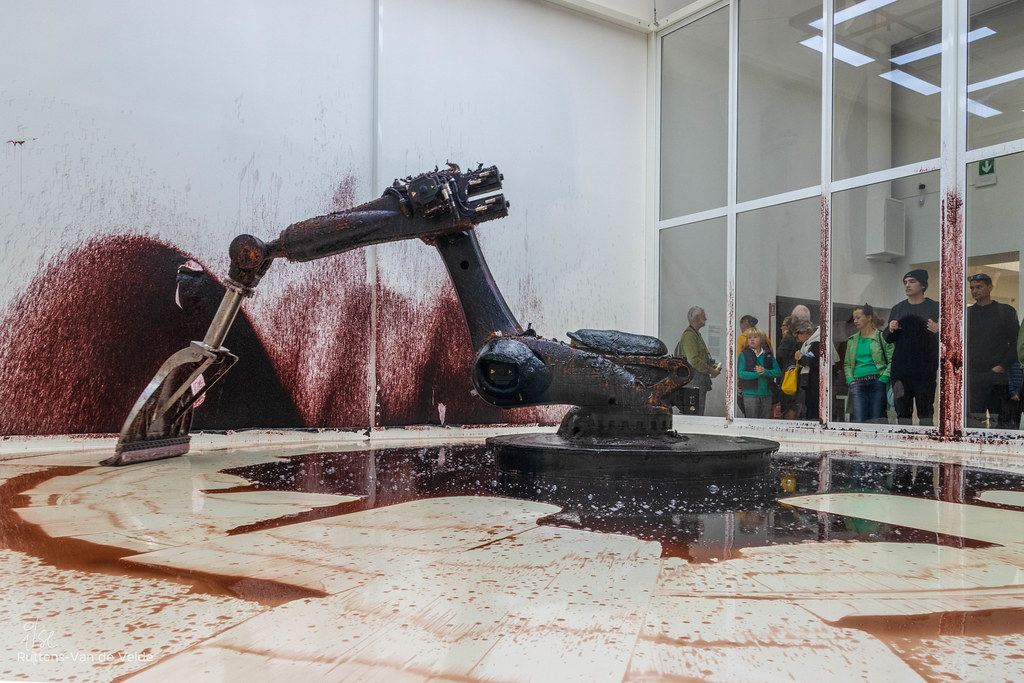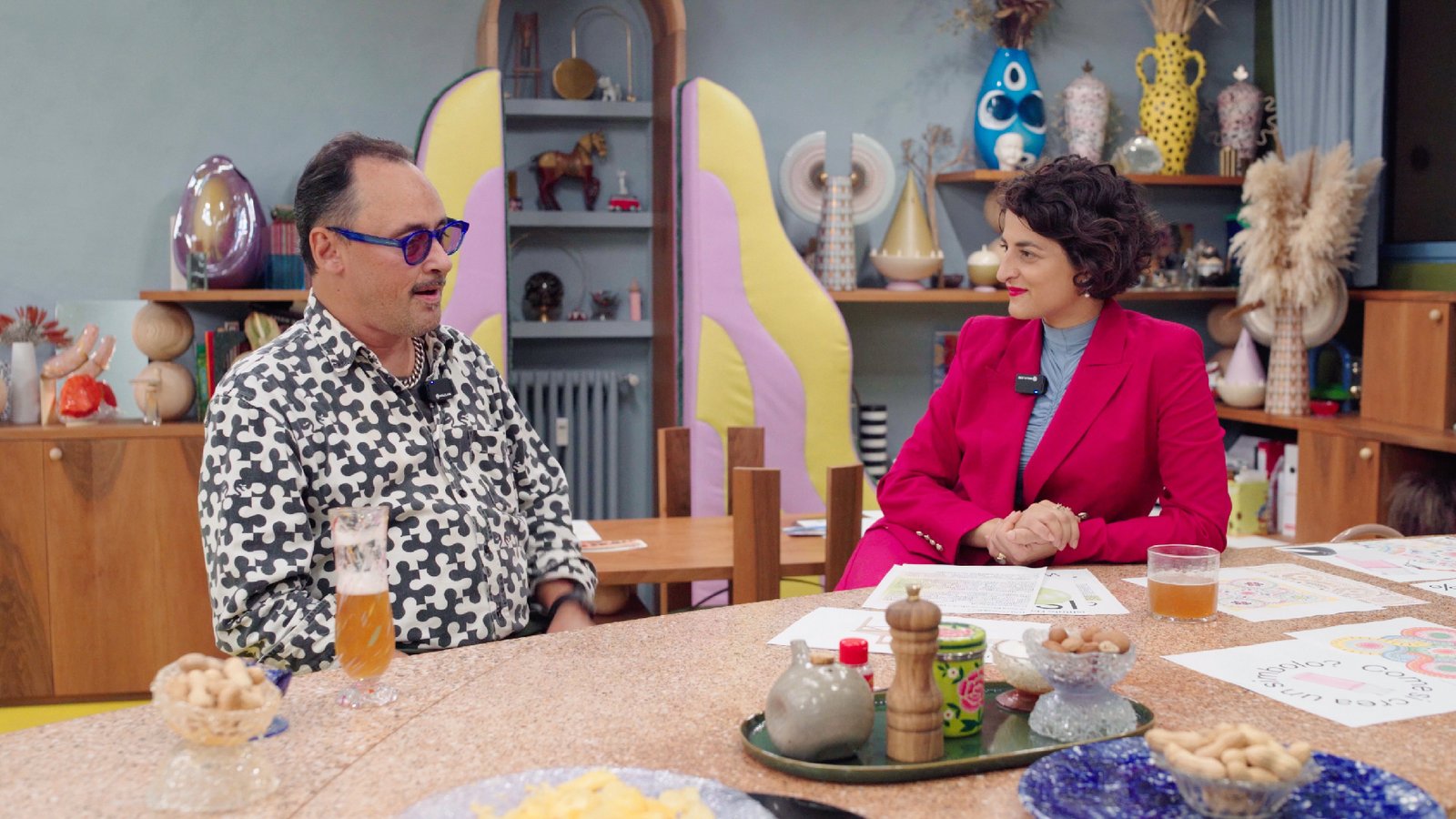
Pixel, robot and empathy
Art in the age of digital narcissism
Digital marketing courses teach that social content performs much better if it includes a person's face: on average, it gets 38% more likes than any other kind of post.
By reflection, in the more ‘visual’ platforms - such as Instagram and TikTok - more than seven out of ten contents are built around a person, whether portrayed in a photo or filmed in a video. Considering that the average user spends about two hours of their day on social media, during which they ‘scroll’ through thousands of pieces of content, it is not difficult to understand that today we observe (and, albeit virtually, interact with) a disproportionate amount of other human beings, probably as never before in history.
 Beeple NFT
Beeple NFT
The digital revolution, in fact, has changed the paradigms of contemporary socialisation: while it is true that in the network we can extend our contacts almost indefinitely, human relationships ‘mediated’ by technology possess a parasocial imprint that compromises their most intimate and profound nature. Beyond the speculative and rhetorical considerations that can be spent on the subject (the issue, after all, has already been explored in millions of academic publications, essays and documentaries), there is a very interesting psychological reading of ‘sociality in the age of social’ that combines neuroscientific research with the ‘effects’ of artistic fruition: I am talking, to be clear, about the relationship that unites art and empathy.
Now, in the most common and pop definition of the term, empathy is generally described as the ability to ‘put oneself in the shoes of others’, that is, the ability to understand and share another person's feelings or emotions. From a scientific point of view, however, the concept is much more articulated. Let us start by saying that there are two different types of empathy: cognitive empathy, which indicates the ability to understand the other person's perspective and feelings - but without feeling the same emotions - and emotional empathy, which instead refers to the ability to personally experience the emotions we recognise in another human being, in a spontaneous and visceral way. Neuroscience, through functional magnetic resonance imaging experiments conducted by Tania Singer, has shown that the two different types of empathy involve completely different brain areas: cognitive empathy activates areas related to reasoning and abstraction, such as the prefrontal cortex, while emotional empathy involves the amygdala and other structures of the limbic system, the seat of emotional memory.
Over the last few decades, several studies have uncovered a rather telling trend: we are witnessing a significant decline in empathy levels, especially among young adults. A well-known study published in 2010 by Sara Konrath, Edward O'Brien and Courtney Hsing, researchers at the University of Michigan, found that empathy among US college students has declined by 40 per cent over the past three decades. This reduction, documented in one of the largest longitudinal studies on the subject, was ‘measured’ using the Interpersonal Reactivity Index (IRI), one of the most widely used psychometric instruments in the scientific community. The IRI, developed in the 1980s by Mark Davis, subdivides empathy into four main dimensions: Perspective Taking, i.e. the cognitive ability to take on another person's point of view and understand their intentions and thoughts; Empathic Concern, understood as the tendency to feel feelings of concern and compassion for others; Personal Distress, i.e. the self-centred emotional response to the stress of others; and finally the Fantasy Scale, i.e. the ability to identify with imaginary and fictional situations.
In Konrath and colleagues' study, data were collected from a sample of about 14,000 university students between 1979 and 2009; the long time span under examination revealed significant changes in the various aspects of empathy, with a particular decrease in the two most socially relevant dimensions: Empathic Concern and Perspective Taking. Most interestingly, the decrease in empathy levels was concentrated mainly in the years after 2000, suggesting a correlation with the cultural and technological changes that intensified during that period.
Even before the digital revolution - which, on closer inspection, exacerbated an already widely established trend - the creation of an increasingly individualistic culture seems to have actively contributed to the decline of empathy. Since the 1980s, to summarise the issue brutally, values such as self-sufficiency, personal success and independence have been emphasised in Western societies at the expense of cooperation and concern for the community. This phenomenon has been extensively documented in authoritative sociological studies such as those of Robert Putnam, author of Bowling Alone - an essay describing the decline of social capital and community networks - or Zygmunt Baumann's celebrated Liquid Modernity, which, almost 25 years after its first edition, still perfectly describes the fragmentation of contemporary societies.
 Bansky
Bansky
With the advent and rise of social media, superficial interactions mediated by platforms have promoted the construction of an artificial image of one's virtual ‘public’ self. Already in 2015, Sherry Turkle, in her book Reclaiming Conversation, explained how online communication has progressively reduced the opportunities for deep and reflective conversations, which are the basis for the development of empathy; only a year earlier, just when the Instagram phenomenon exploded in Italy, a study published in the journal Computers in Human Behavior showed that young people who spend more time on social media tend to show greater narcissistic tendencies.
To these data (well known to those familiar with sociological issues related to new media) is added a concept that is particularly relevant to understanding the historical moment in which we live: information overload. I'll make it short: human beings are not predisposed to process huge amounts of emotional information in a short time. However, social media constantly expose us to images of human suffering, wars, humanitarian crises, natural disasters and social injustice. In the face of this mass of stimuli, a phenomenon known as ‘compassion fatigue’ emerges, an emotional exhaustion that makes it difficult to continue to respond with empathy to situations of suffering. Initially studied in clinical contexts, especially among health and humanitarian relief professionals, compassion fatigue has now entered the dictionary of the social media world to describe the emotional detachment that seems to rage within a hyper-connected network. Already in 1958, in an article published in the New York Times, a sentence erroneously attributed to Stalin read ‘one death is a tragedy, one million deaths are statistics’: the digital revolution, even in this case, seems to have exasperated a tendency that has very deep roots. There is an artistic ‘case’ that perfectly sums up this concept: it is a story of fake news, indignation, virality, memes and fiction - a story of art and empathy.
In 2016, the Chinese artists Sun Yuan and Peng Yu created and exhibited the work Can't Help Myself at the Venice Biennale, a robot programmed to constantly clean a fluid that progressively moves away from the centre of the plinth, at the upright on which the mechanical arm is grafted. The meaning of the work, according to the artists, revolves around the concept of control and failure. Despite its incessant ‘efforts’, the robot cannot physically complete its task: it is programmed to endlessly fail. The continuous and futile struggle with liquid symbolises the human condition, our inability to contain what is uncontrollable, both personally and socially. Specifically, Sun Yuan and Peng Yu said they were inspired by the immigration control policies that were at the centre of the US presidential election debate at the time.
 Sun Yuan and Peng Yu, Can't Help Myself
Sun Yuan and Peng Yu, Can't Help Myself
The work was immediately a moderate success - but nothing really striking. Three years later, however, things change completely. In 2019, Can't Help Myself is exhibited at the Guggenheim in New York. During this second installation, the wear and tear on the mechanical components made the robot appear more rusty and ‘tired’. The movements of the robotic arm were slowed down, weakened, and produced a high-pitched squeal similar to a scream of pain. Comparative videos began to circulate on social media showing the decay of the work. Some begin to argue that the red fluid incessantly collected by the robot is actually hydraulic fluid that ‘keeps’ the machine alive. Presented in this way, the story becomes the perfect material for viral Reel and TikTok: short, simple, powerful. A real trend was born, telling the story of the ‘saddest robot in the world’, condemned to work non-stop to survive amidst excruciating suffering.
 Sun Yuan and Peng Yu, Can't Help Myself
Sun Yuan and Peng Yu, Can't Help Myself
The urban legend turns into fake news, and like all stories that play on immediate emotions it triggers an angry debate: among the millions of comments produced on social networks, users are divided between those who are moved by the machine and those who find it absurd to feel empathy for a robot that cannot, in any way, experience pain. People argue, interactions increase, videos go increasingly viral. In the meantime, pandemics break out, wars begin, natural catastrophes devastate half the world, and yet that mechanical arm continues to move (or infuriate) anyone who comes across content that tells its - fake - story of sacrifice and heroic survival.
The reason Can't Help Myself has generated such an intense response is the incredible power of storytelling. Human empathy works best when we can relate to individual stories and particular circumstances: a robot fighting a losing battle against an unstoppable force becomes a symbol of personal tragedy, while the real human suffering of millions, when depicted in an analytical, journalistic, impersonal way, becomes too distant, abstract or overwhelming to stimulate the same level of emotional response.
 Sun Yuan and Peng Yu, Can't Help Myself
Sun Yuan and Peng Yu, Can't Help Myself
If you remember, one of the dimensions describing empathy in the Interpersonal Reactivity Index is the Fantasy Scale, i.e. the ability to identify with imaginary situations. Storytelling, in essence, allows individuals to immerse themselves in structured situations, constructed ‘on a human scale’, facilitating the activation of brain areas related to emotional processing. People are more inclined to empathise with a closed and comprehensible narrative, such as the desperate struggle of a robot in a museum, rather than with the abstract suffering of a large number of people. Art ultimately helps us get in touch with our reservoir of emotional memory even when it does not directly depict the human condition, stimulating strong empathic responses. The case of Can't Help Myself has another aspect to consider carefully: serendipity. The compassion produced by robots stems from a story that users stumble upon by pure chance; no one, on closer inspection, expects to feel empathy for a mechanical arm: yet, upon discovering the robot's desperate struggle for survival (however symbolic and the result of fake news), people are intimately affected by the story.
In this context, art and new media do indeed have the potential to counteract the emotional addiction induced by compassion fatigue, provided they can translate abstract concepts into ‘visible’ experiences. Even in the digital world, the key remains storytelling: art can seriously help awaken our capacity to feel empathy and make us think about broader and more complex issues. This article is a prime example of this: the ‘saddest robot in the world’ has produced sociological, psychological and neuroscientific reasoning far removed from the artists' original intentions, not least by virtue of the virality triggered by a narrative distortion of the installation - but this does not imply that the work has any less cultural value. On the contrary: art, I will never tire of repeating, always possesses a relational dimension; it always stems from the encounter between artist, creation and spectator. The meaning of the work changes, evolves, constantly redefining its conceptual boundaries.
I'll be brutal: people get pissed off because a robot cleaning a floor generates more emotion than a school destroyed in a bombing raid? Good. Finally. It's about time someone noticed the emotional drift that surrounds us. And of which we are inexorably a part. At the same time, however, I appreciate those who look at Can't Help Myself and feel compassion, nourishing - hopefully - an introspective reflection on contemporary alienation, the pain (?) of a machine that seems to have gained consciousness (after all, the exponential development of AI does not make it at all such a remote scenario) or the value we place on life, on our time, on the debasing repetition of the identical. It is all good. All right, all sacrosanct - as long as the debate, the discussion, the confrontation come out of the ‘bubble’ that generated them. Art will not save the world, but it is a very powerful emotional and intellectual vector. The value of a work, without rhetoric, is determined by who observes it: the important thing is to build opportunities for genuine encounter. Even of confrontation, if necessary. Beyond aesthetics, artists allow us to look at reality in a different way. It doesn't always happen, but when it does, a small revolution can be born.

Cover image: Sun Yuan e Peng Yu, Can't Help Myself
Creative, teacher and expert in visual culture, Alessandro Carnevale has worked on TV for several years and has exhibited his works all over the world. In 2020, the Business School of Il Sole 24 Ore included him among the five best Italian content creators in the artistic field: on social media he deals with cultural dissemination, covering a wide spectrum of disciplines, including the psychology of perception, semiotics visual, aesthetic philosophy and contemporary art. He has collaborated with various newspapers, published essays and written a series of graphic novels together with the theoretical physicist Davide De Biasio; he is the artistic director of an open-air museum. Today, as a consultant, he works in the world of communication, training and education.



